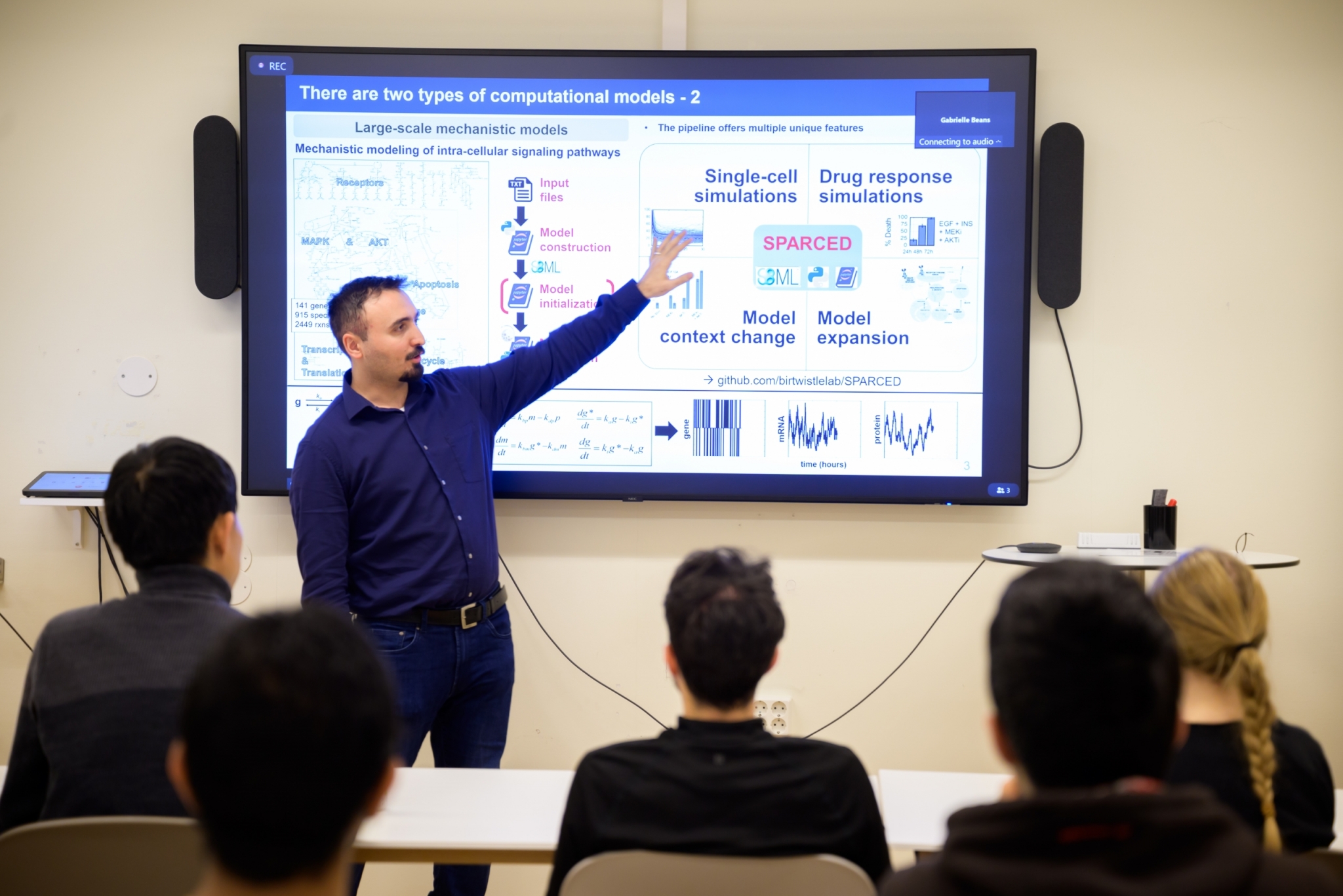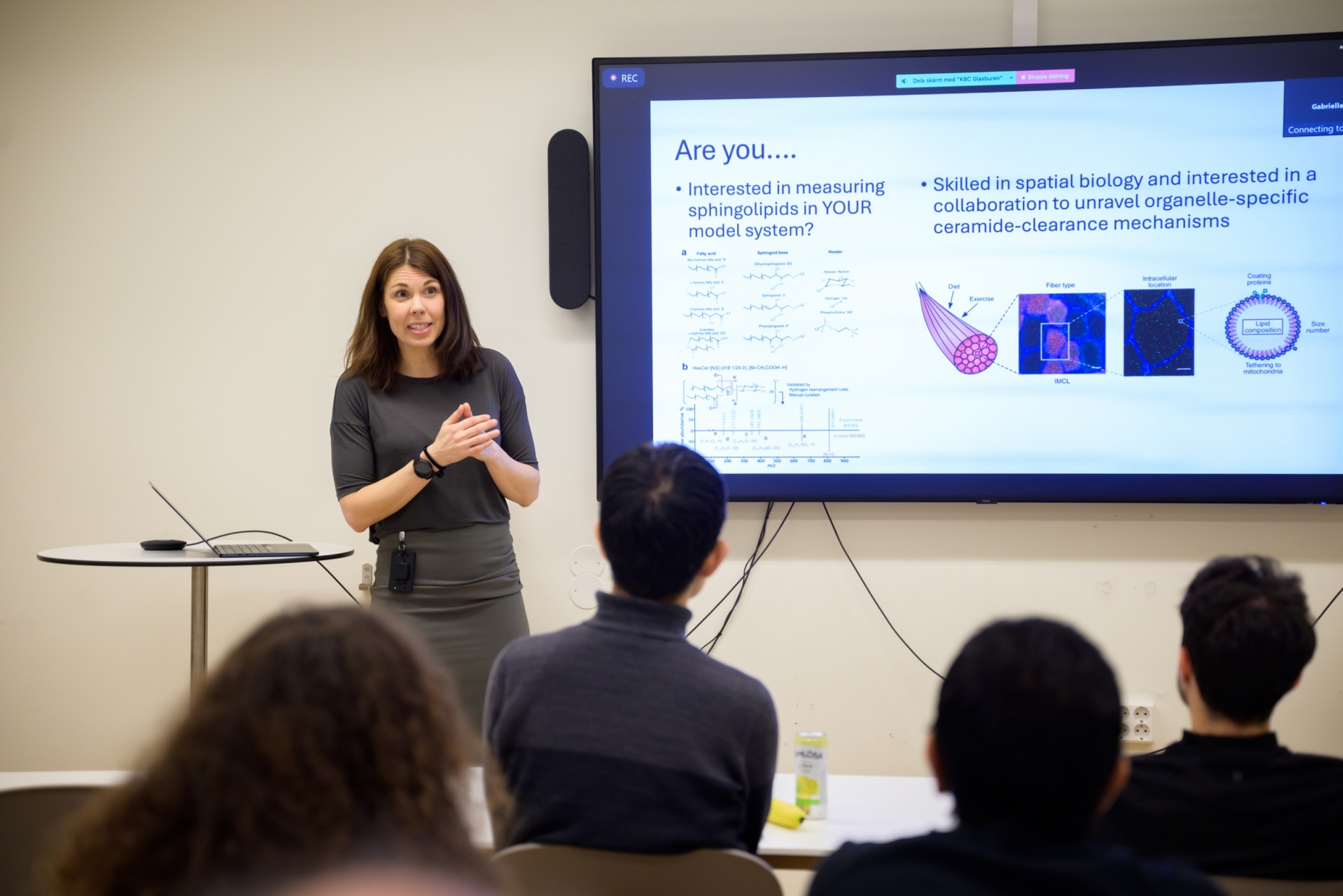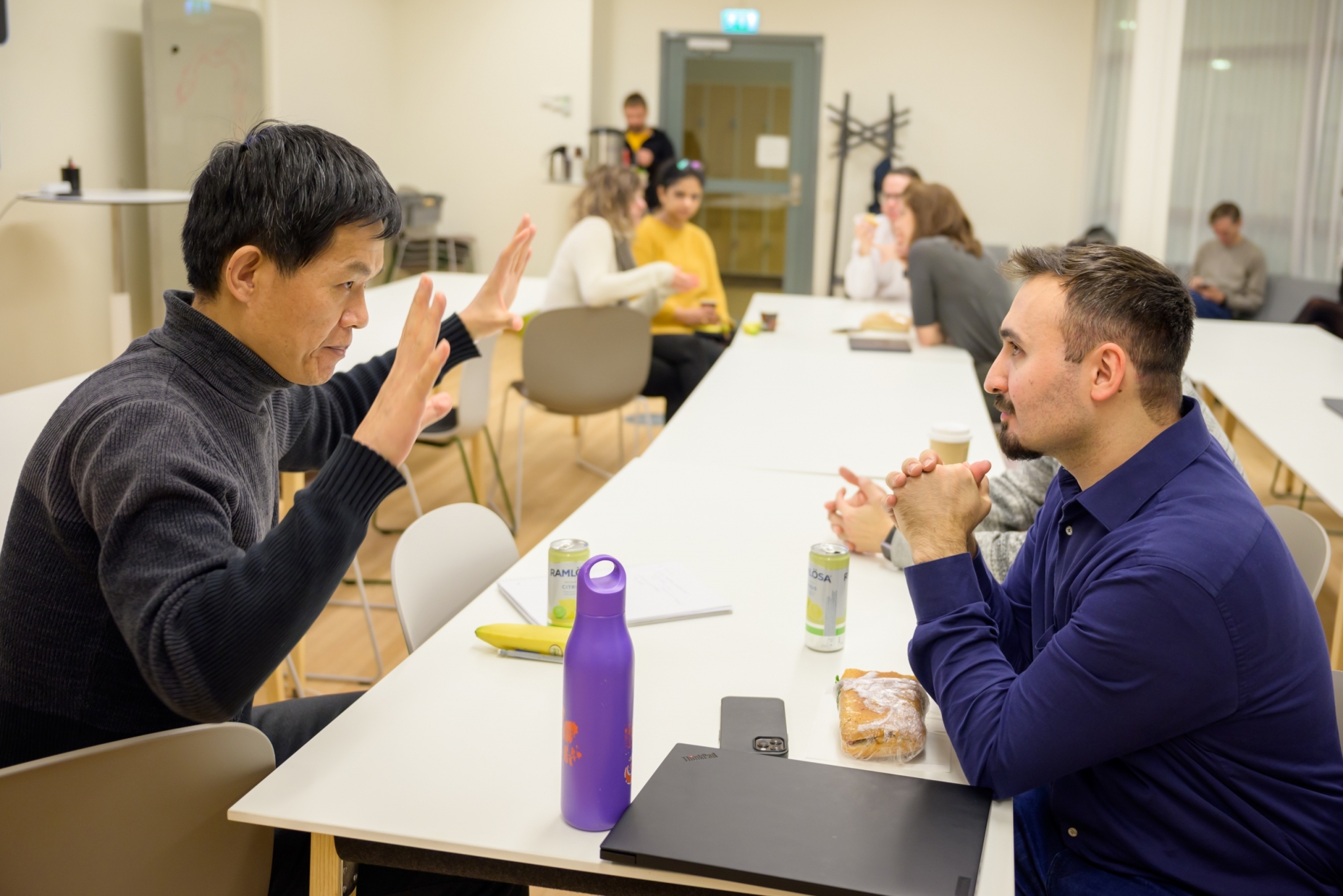February 28th Lunch Pitch: Cemal Erdem and Elin Chorell
February 28, 2024
Cemal Erdem introduced his use of machine learning and mechanistic modeling in cancer and disease research, while Elin Chorell sought collaborators to help with the next stages of her research on sphingolipids and their effect on metabolic diseases.
Make computational models great again – pitch by Cemal Erdem, Assistant professor, Department of Medical Biosciences
The sphinx of our metabolism – pitch by Elin Chorell, Assistant professor, Department of Public Health and Clinical Medicine
The global rise in obesity and type 2 diabetes poses a significant health risk, accompanied by comorbidities like cardiovascular diseases and certain cancers. Recent findings challenge the notion of type 2 diabetes as a lifelong condition, revealing that a reduction of organ fat can induce disease remission meaning that lipid mechanisms are of key importance to both disease progression and remission. While diabetes can be managed with lifestyle changes and medication, the underlying mechanism remains unclear, hindering efficient risk prediction and treatment.
Elin Chorell’s expertise lies in mass spectrometry-based lipidomics screening, focusing on insulin signaling tissues, disease progression, and remission. Her research group explores obesity-related states, studying the impact of exercise and diet through human studies, mouse models, and cell experiments. Their focus is on sphingolipids, a complex class of lipids involved in a range of cellular processes. Her research indicates that sphingolipid metabolism, specifically in pancreatic islets and skeletal muscle, are detrimental for the insulin signaling machinery. Sphingolipid metabolism, says Elin, like its namesake ‘the Sphinx’, remains an enigma due to their diverse chemical composition and therefore a challenge to measure. Elin is focused on unraveling the chemical composition of the bioactive lipids of the sphingolipid metabolism in her quest to understand obesity-associated disease. She is currently seeking to connect altered tissue metabolism with circulating markers. Identifying important markers could help uncover therapeutic targets for risk assessment and monitoring.
In order to achieve this goal she is seeking collaborators experienced in sorting cell populations or tissue or single cell bioimaging to further unravel the spatial orientation of the bioactive sphingolipid derivatives her group has identified in their model systems.






